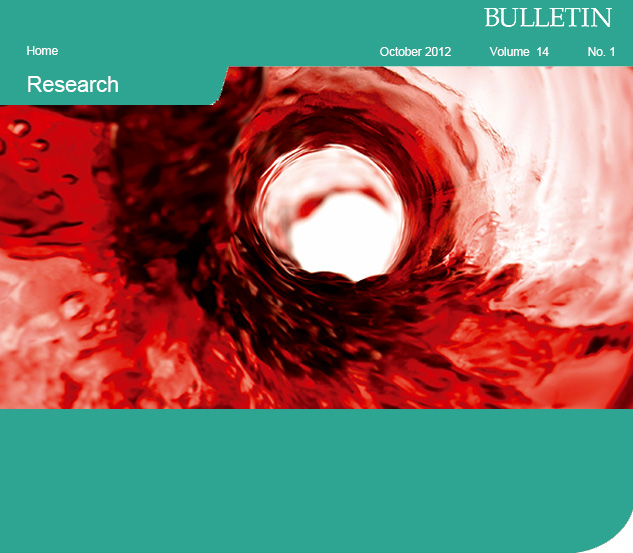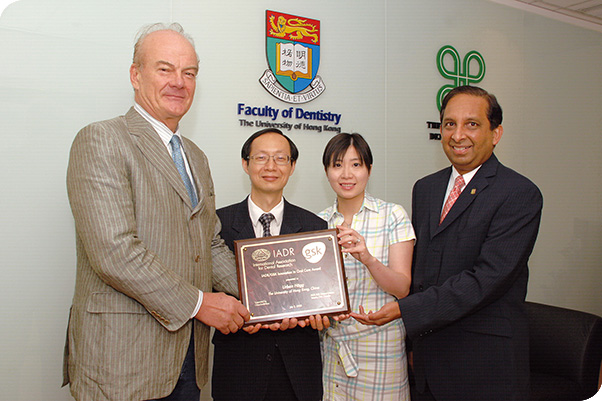| Saving Teeth with Red Wine and Prunes | |
| Several chemicals present in plums, grapes and red wine can kill bacteria associated with gum disease – leading researchers to seek more natural remedies for oral health. |

|
Periodontal disease is one of the commonest problems affecting dental health today. More usually known as gum disease or gingivitis, periodontitis is an inflammatory disease of the soft tissue and bones that support the teeth. Main symptoms are bleeding, sore gums, bad breath and later – if left untreated – loosening of the teeth and eventually their loss. In the US, around 80 per cent of the population will suffer from it during their lives. While the figure is better in Hong Kong, dentists estimate that around 500,000 adults live with gum disease untreated and it is a major cause of general oral health problems. Tooth loss in old age was once considered a natural eventuality, and one of its greatest accelerants was gum disease. But research has shown that attaining optimal oral health – and particularly staving off gum disease – can lead to healthy teeth for life. And the really good news is: red wine might actually help. To be more accurate, a chemical found in red wine might help. “I’m afraid that just drinking red wine is not going to cure periodontitis,” laughs Dr Ricky Wong Wing-kit, Clinical Associate Professor of Orthodontics in Faculty of Dentistry. It is the resveratrol, found in the grapes, that is the key. Through laboratory studies, Dr Wong and his research team tested resveratrol for in vitro activity against 12 bacteria and three fungi found in the mouth. The compound inhibited liquid cultures of the bacteria Actinobacillus actinomycetemcomitans and Porphyromonas gingivalis, completely killing both within six hours. It is hoped that after more research has been done on the killing mechanism and on bacteria living in the mouth, resveratrol could be developed into an alternative to antibiotics for gum disease. |
 Dr Ricky Wong (second from the left) receives funding for the ‘prune mouthwash project’, with (from left to right) Professor Hagg, the then-Chair of Orthodontics, Dr Michelle Yuen, an MOrth student for part of the prune project, and Professor Samaranayake, Dean of the Faculty of Dentistry. |
| “What we want to do is to utilise something that we drink every day that would be good for your health and oral hygiene.”
|
||
| Dr Ricky Wong |
||
|
Natural sources Dr Wong and several research teams have for some time been looking into the possibility of finding agents from natural sources to prevent, or cure dental problems in vitro. Three in particular have proved effective: resveratrol, that is present in such fruits as berries, red grapes and red wine; naringin which is in citrus fruits such as grapefruit and has a bitter taste and quercetin which is also found in red grapes – and their product red wine – apples, black and green tea, onions, broccoli and other green vegetables, cherries and berries. “This research came about as an extension of our work on Traditional Chinese Medicine (TCM) because we were interested in different natural products,” says Dr Wong. “Over the years we have discovered there are many different applications of TCM in dentistry, including bone induction, anti-microbial effect, anti-cancer effect, anti-inflammatory effect, orthodontic tooth movement, and pain control.” At first, the possibilities of TCM for the treatment of periodontal diseases did not come into their research area. “When we started the TCM studies about 10 years ago we weren’t actually interested in the anti-bacterial properties,” says Dr Wong. “We were studying tissue engineering – enhancing bone-growth after surgery to repair cleft palates. During bone tissue experiments – in which we did animal tests to see if these chemical helped bones grow research – we discovered these natural products had other beneficial effects. Specifically periodontal disease came back to the bacteria. Further, because of SARS there was a lot of interest at the time in anti-microbial research.” Dr Wong and the team have pinned down that they can kill some – though not all – bacteria specific to periodontitis. They are awaiting clinical trials now which they hope these will confirm that resveratrol kills pathogens. Dr Wong and his team made further discoveries about another natural flavonoid naringin, commonly found in citrus fruits such as grapefruit, as well as Chinese plums or prunes. They found that a traditional Chinese medicine that comes from a dried prune – specifically from the Asian plum, or Japanese Safer alternative Their aim was to find safer alternatives to many of the brand name mouth rinses available over the counter today, which may actually be harmful if swallowed. What they were seeking was a new way to kill oral bacteria that was both safe and natural. The extract from the plum, called yu wei in Chinese, proved to be effective against all four bacterial species it was tested on. And against two of them it proved more effective than a chemical commonly found in commercial mouth rinses. “As a result of our findings, we got a grant from GSK (GlaxoSmithKline) for US$75,000 to develop a mouth rinse using natural extracts,” says Dr Wong. “What we’ve come up with is similar to brand name mouthwash, but not as concentrated. It is quite sour though. At the moment, if you gargle with it then rinse with baking powder it takes away the rather bitter taste. From Chinese medicine we are hoping to prepare a recipe – hopefully for commercial use. What we want to do is to utilise something that we drink every day that would be good for your health and oral hygiene.” Dr Wong graduated from HKU with Bachelor of Dental Surgery, then became a government dentist for a few years before getting his Master in Orthodontics. He returned to working for the government while also doing a part-time PhD. When the government introduced an early retirement scheme, he took it and entered into research within the Faculty’s Orthodontics Discipline in 1995. Soon started to supervise research students – one of his PhD students is currently working on mouth rinse project, while another is busy on the commercial development. |
| Back | Next |